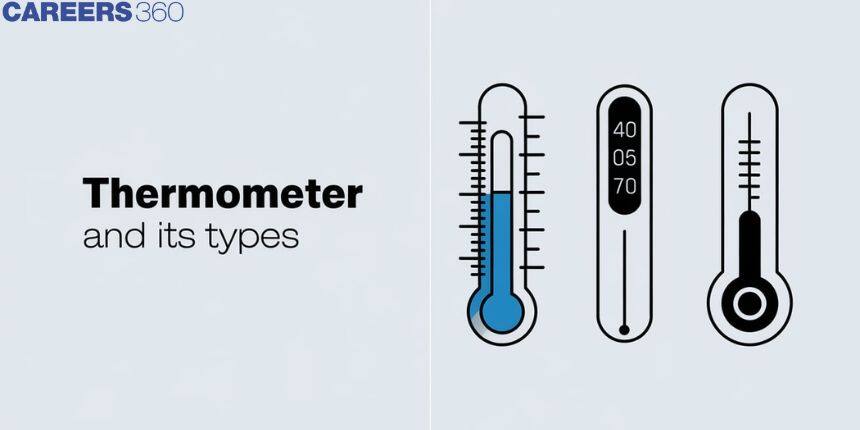Thermometer And Its Types
Thermometers are essential instruments that measure temperature, a fundamental aspect of our daily lives and various scientific applications. From checking a fever to ensuring precise temperature control in industrial processes, thermometers play a crucial role in both personal health and technological advancements. They come in various types, each suited to different needs and environments. Understanding the different types of thermometers—ranging from traditional mercury thermometers to modern digital and infrared versions—can help us make informed choices for accurate temperature readings. In real life, whether you're cooking a meal, monitoring weather conditions, or conducting scientific experiments, the type of thermometer you use can significantly impact the accuracy and efficiency of your measurements. This article explores the various types of thermometers and their practical applications, highlighting their importance in everyday situations and specialized fields.
JEE Main/NEET 2027: Physics Important Formulas for Class 10
NEET 2025: Mock Test Series | Syllabus | High Scoring Topics | PYQs
JEE Main: Study Materials | High Scoring Topics | Preparation Guide
JEE Main: Syllabus | Sample Papers | Mock Tests | PYQs
- Thermometer and its Types
- Solved Examples Based on Thermometer and its Types
- Summary

Thermometer and its Types
Thermometers are indispensable tools in our everyday lives, used to measure temperature accurately in various settings. From checking if a child has a fever to calibrating machinery, these devices help us monitor and control temperature effectively. There are several types of thermometers, each designed for specific applications and environments. Traditional mercury thermometers, with their precision and reliability, have been widely used but are gradually being replaced by safer alternatives. Digital thermometers offer quick and easy readings, while infrared thermometers provide non-contact measurements, ideal for a range of practical uses.
Thermometry
A branch of science that deals with the measurement of the temperature of a substance is known as thermometry.
An instrument used to measure the temperature of a body is called a Thermometer. The principle on which it works is by absorbing heat from the body.
There are various kinds of thermometers which are briefly classified into three types
Liquid Thermometers
In liquid thermometers, mercury is usually preferred over other liquids. The reason behind this is its expansion is large and uniform. The main reason behind all these is that it has high thermal conductivity and low specific heat.
Range of temperature :(freezing point of mercury) - ( boiling point of mercury) which is
The formula for the calculation of temperature at any length of l
Here
Gas Thermometers
In this gases are used as thermometric material. Gas thermometers are more sensitive and accurate than liquid thermometers as the expansion of gases is more than that of liquids. In this gas are used as a thermoelectric substances are called ideal gas thermometers. These are basically two types
Constant Pressure Gas Thermometers
If pressure is constant, then for an ideal gas, volume is directly proportional to temperature. So,
The formula for the calculation of temperature at any volume V:
Here,
Constant Volume Gas Thermometers
If the volume is constant, then for an ideal gas, pressure is directly proportional to temperature. So,
The formula for calculation of temperature at any pressure P:
Here,
Resistance thermometers: Usually Platinum and Germanium are used in resistance thermometers due to their high melting point and large value of temperature coefficient of resistance. This type of thermometer can be used for high temperatures.
The formula for calculation of temperature at any resistance R:
Here,
Recommended Topic Video
Solved Examples Based on Thermometer and its Types
Example 1: An instrument used to measure the temperature of the body is known as
1) Hydrometer
2) Manometer
3) Barometer
4) Thermometer
Solution:
Thermometers
An instrument used to measure the temperature of a body is called a thermometer.
Hence, the answer is the option (4).
Example 2: The temperature range of the liquid thermometer is
1)
2)
3)
4)
Solution:
Liquid Thermometers
wherein
Range of temperature
Hence, the answer is the option (3).
Example 3: A branch of science that deals with the measurement of temperature is known as
1) Hydrometry
2) hygrometry
3) Thermometry
4) Barometry
Solution:
A branch of science that deals with the measurement of the temperature of a substance is known as thermometry.
Hence, the answer is the option (3).
Example 4: The temperature range of the resistance thermometer is
Solution:
Resistance Thermometers
Temperature Range
Hence, the answer is the option (3).
Example 5: For a constant volume gas thermometer, which of the following expressions is correct?
1)
2)
3)
4)
Solution:
Constant Volume gas Temperature
Hence, the answer is the option (2).
Summary
Thermometers are crucial instruments for measuring temperature in various applications, from everyday health checks to industrial processes. They come in several types, including liquid thermometers using mercury, gas thermometers with constant pressure or volume, and resistance thermometers made from materials like platinum and germanium. Each type has unique principles and applications, such as the precise temperature range of liquid thermometers or the sensitivity of gas thermometers. Understanding these differences helps in selecting the appropriate thermometer for accurate temperature measurement in diverse situations.
Also Read
26 Sep'24 10:56 AM
25 Sep'24 06:21 PM
25 Sep'24 06:20 PM
25 Sep'24 06:19 PM
25 Sep'24 06:18 PM
25 Sep'24 05:50 PM
25 Sep'24 05:50 PM
25 Sep'24 05:48 PM
25 Sep'24 05:48 PM
25 Sep'24 05:47 PM
